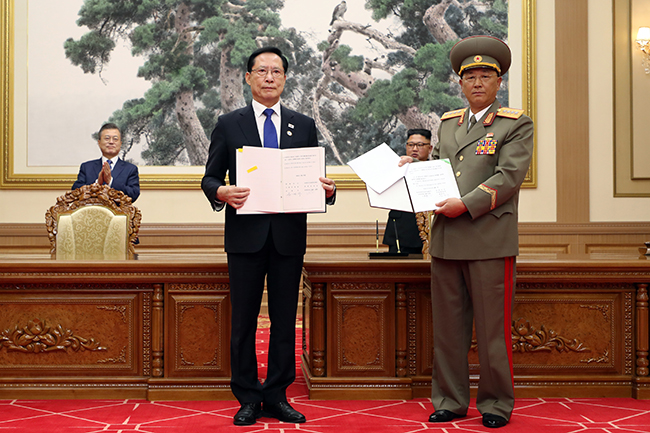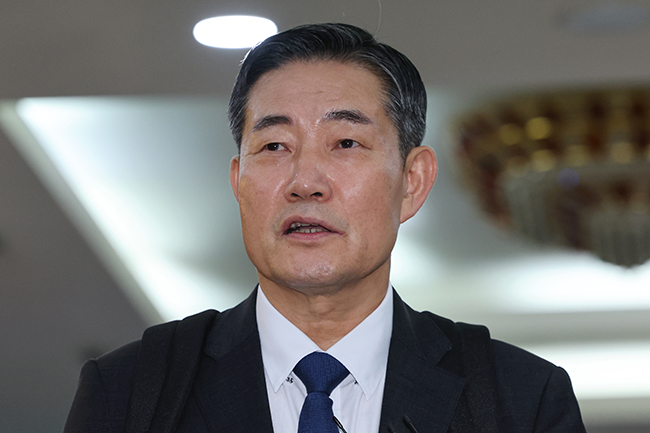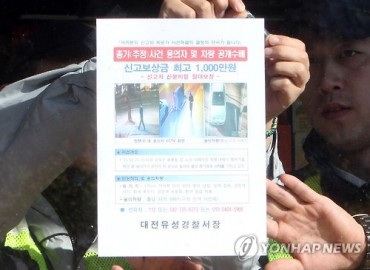
This file photo, taken Sept. 19, 2018, shows then Defense Minister Song Young-moo (2nd from L) and his North Korean counterpart, No Kwang-chol, posing for a photo after signing the Comprehensive Military Agreement at the Baekhwawon state guesthouse in Pyongyang. Then President Moon Jae-in (L) and North Korean leader Kim Jong-un (2nd from R) are seen in the back. (Image courtesy of Yonhap News)
SEOUL, Sept. 19 (Korea Bizwire) — Five years after its signing, the fate of a landmark inter-Korean military tension reduction agreement is in limbo as a series of violations by North Korea raised questions about its need, with the incoming defense minister openly calling for its scrapping.
The Comprehensive Military Agreement was signed when then President Moon Jae-in traveled to Pyongyang for summit talks with North Korean leader Kim Jong-un. The deal is designed to dial down military tensions, prevent accidental clashes and build mutual trust.
The effectiveness of the accord, however, has increasingly been put into question recently, as Pyongyang has repeatedly taken military actions disregarding it, while pressing ahead to advance its nuclear and missile programs.
Since its signing, Pyongyang has violated the agreement 17 times until the end of 2022, according to Seoul’s Defense White Paper. Of the total, 15 of the violations occurred last year.
The latest high-profile breach took place last December, when the North sent five unmanned aerial vehicles across the Military Demarcation Line separating the two Koreas, with one of them penetrating a no-fly zone around the presidential office in central Seoul.
In January, President Yoon Suk Yeol ordered aides to consider the deal’s suspension should Pyongyang violate the South’s territory again.
Under the inter-Korean relations development act, South Korea can suspend agreements with North Korea if it is deemed necessary for national security and other reasons. As the deal took effect without parliamentary ratification, its suspension does not require parliamentary approval.
Last week, Defense Minister nominee Shin Won-sik also questioned the need for the agreement, arguing that it has damaged the military’s capabilities to monitor the North’s front lines.
“Personally, I believe that it is desirable for it to be scrapped,” he told reporters last Friday.
Meanwhile, the unification ministry, in charge of inter-Korean relations, has said it is reviewing the conditions for the suspension of the inter-Korean agreement in preparation for a situation where the North intrudes the border again.
“An agreement that is unilaterally kept by us and not followed by North Korea is not desirable,” Kim In-ae, the ministry’s deputy spokesperson, told a press briefing the same day.

Defense Minister nominee Shin Won-sik speaks to reporters at the defense ministry compound in central Seoul on Sept. 15, 2023. (Image courtesy of Yonhap News)
At the time of its signing, the agreement had raised hopes of laying the groundwork for conventional arms control and contributing to promoting peace on the Korean Peninsula.
The agreement included setting up a land buffer zone, where artillery drills and regiment-level field maneuvers are to be suspended, as well as maritime buffer zones, where artillery firing and naval drills are to be banned. It also designated no-fly zones near the border to prevent accidental aircraft clashes.
It also outlined schemes to withdraw some border guard posts and disarm the Joint Security Area in the Demilitarized Zone.
The signing took place at the height of a reconciliatory mood between the two Koreas, but ties have since taken a turn for the worse, as North Korea has focused on advancing its weapons programs after the no-deal summit in Hanoi between Kim and then U.S. President Donald Trump in 2019.
North Korea has staged a flurry of ballistic missile tests since last year, recently highlighted by its launches of the Hwasong-18 solid-fuel intercontinental ballistic missile in April and July. It has also vowed to put a military spy satellite in orbit this year.
The North’s leader also visited Russia last week for a summit with President Vladimir Putin, raising concerns of military cooperation that could harden the regional geopolitical deadlock as Seoul, Washington and Tokyo step up security coordination against Pyongyang’s threats.
Some observers expressed concerns over the possibility of the suspension of the agreement, noting that it has still brought a noticeable reduction in maritime clashes near the Northern Limit Line in the Yellow Sea, a de facto sea border, during crab catching seasons.
“The agreement has played a role in bringing a certain level of stability in the NLL,” Park Won-gon, a professor of North Korea studies at Ewha Womans University, said. “In a situation where inter-Korean dialogue isn’t taking place, if the agreement is scrapped, the possibility for accidental collision will become bigger.”
The two Koreas have produced nearly 260 agreements through 680 rounds of talks over the past 50 years, but none of them have been scrapped explicitly, though many have been rendered non-operational.
(Yonhap)






